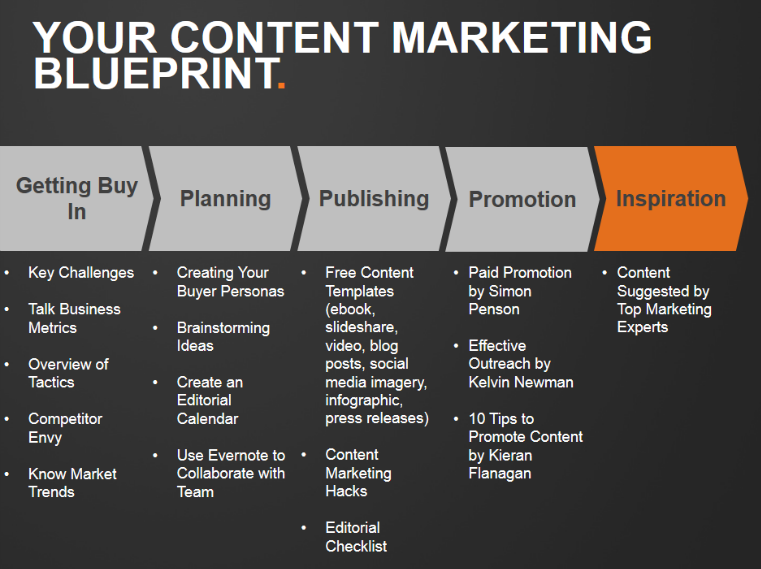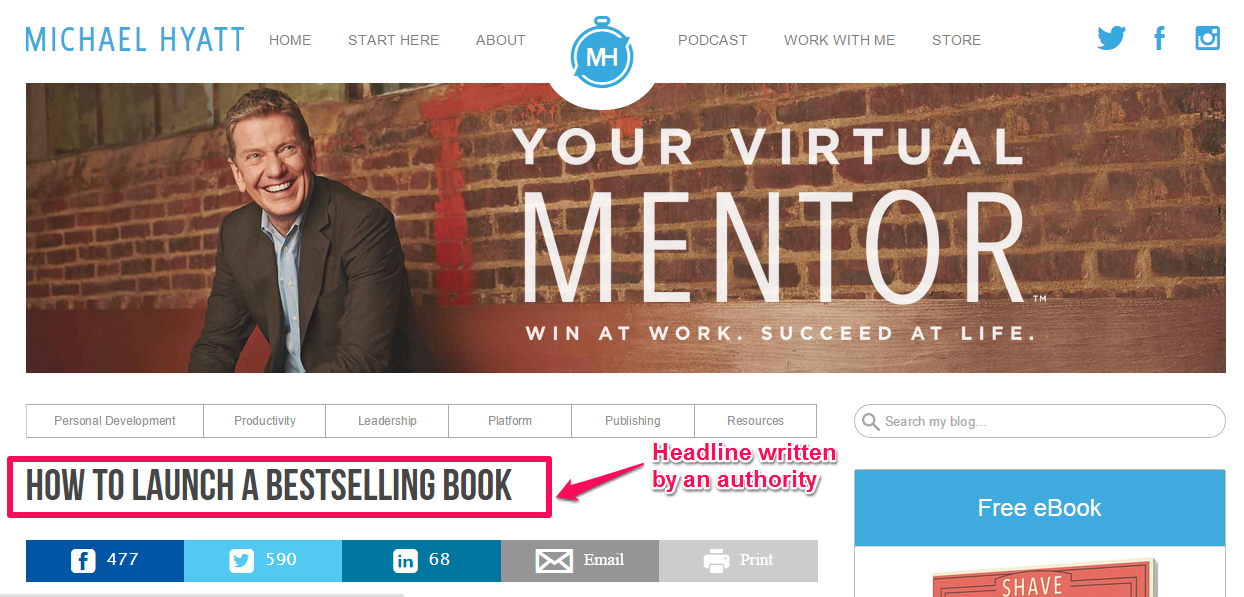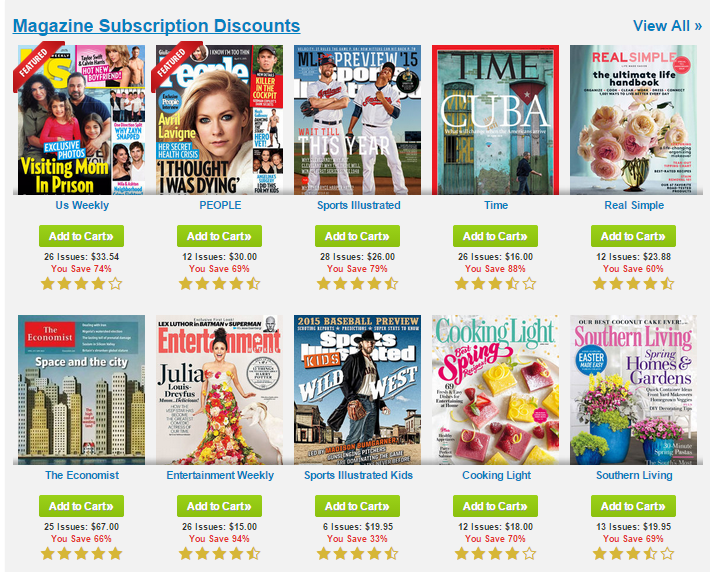Are you working hard to write creative, quality articles, only to find out that people are not paying attention?
If so, you’re not alone. The biggest challenge is creating content that drives leads and sales.
So, lots of people are struggling to get people to read beyond the headline and to share their articles on social media platforms. This guide will help.
Not all blog posts are created equal. Some posts produce outstanding results, while others fizzle out. But, most content marketers keep trying. That’s the name of the game.
If you want to increase user engagement on your blog, generate more social shares, increase click-through rates, acquire more customers and drive sales, try switching content strategies to the data-driven blog post.
Here are five simple steps to creating data-driven blog content. These are the exact strategies that I use to write all of the content on NeilPatel.com and they’ll work for you, too.
Step #1: Understand What a Data-Driven Post Is
Having built three successful blogs through content marketing, I’m not new to writing. A few years ago, I began to see a different kind of engagement with my readers. They were spending anywhere from 30 minutes to a full hour reading my posts.
This increased engagement was a result of the kind of content that I write: articles and blog posts where every statement or assertion I make is backed up by testing and data.
With consistent publication of high-quality, data-driven journalism, you can grow your blog to 100,000 readers within two years.
But it’s not just about big data, data journalism, and numbers. You also need to care about your readers and build genuine relationships.
What counts as data: Not every statement or sentence counts as data, which we can define as “factual information generated from experiments, surveys or testing that is used as a basis for forming conclusions.”
Two people could research the same topic and get different results. Data isn’t static or favorable to everyone – or even to most people. But, as long as your data comes from testing or has been proven by experts, using modern tools, your data-driven journalism will be more authoritative.
How people respond to data: In 2012, Facebook studied human behavior and social media. Essentially, Facebook manipulated the emotions of 689,003 users, without the users’ knowledge. These results are still applicable today.
The experiment ran for one week. During that time, Facebook’s researchers removed either all of the positive posts or all of the negative posts from a user’s news feed, to see how the user would react. This is the chart showing their results:
The scientists found that positive emotions from friends yield a positive response from the user. The reverse was also true. In other words: on Facebook, emotions are contagious. And now, it has big data to back up that statement.
When you include data journalism in your content, readers perceive your content to be more valuable, more authoritative and more trustworthy.
Step #2: Develop a Content Marketing Strategy
Content is king. This is why 94% of B2B marketers use content marketing to generate traffic, increase click-through rates, acquire leads and increase sales.
No matter what your business model is, you need a strategy. If you want to know how well your content is working for you, then you’ve got to incorporate it into a system, so that you can eliminate guesswork and get consistent results.
A content marketing strategy is like a blueprint for successful online inbound marketing.
The Content Marketing Institute’s research showed that more than 80% of B2B marketers who say that they have a content marketing strategy have never documented it. Only 35% actually have a documented content marketing strategy.
Let’s fix that in 3 simple steps:
i). Have a clear purpose: What’s the purpose of your content? Get clear on that from the very beginning. Doing so will help you create a blog post that will drive traffic, attract customers and lead to sales.
Be as specific as possible. If you want to build your email list, align your post accordingly. If you need sales, then highlight your product’s benefits without hard-selling to potential customers. Give value, no matter what your purpose is.
ii). Know your audience: An intimate understanding of your audience gives you an unparalleled edge, because you understand their pain points and what keeps them awake at night. Strategic Peacock agrees: you have to know your audience and what they believe in.
For example, if you’re in the weight loss niche, most of the keywords that your users search for in a search engine suggest pain – they’re sick and tired of buying into pricey, ineffective programs. Let’s see some of the keywords form the search engine result:
iii). Build a content calendar: Once you understand your audience’s pain points, the next step is to develop an editorial calendar that works for you. That way, you won’t have to struggle to find great blog ideas and can instead focus on nurturing your audience.
Step #3: Write Data-Driven Headlines
Out of every ten blog visitors, eight will read your headline, but only two will read the rest of the copy. This drives home how important your headline really is for conversion rates. You can’t really see the power of blogs until you master the art of writing clickable headlines.
People have a million things that they want to do, other than reading blog posts and articles. The only way to get their attention is to write incredible headlines that are attractive and contain factual information through a data-driven approach.
This factual information is usually obtained from experiments, surveys, test cases, case studies or research studies. When you add data to your headline that’s backed up in the content, you’ll win your audience’s trust.
Remember that the data can be in the form of numbers, a story, text, web page, or images that explain the outcome of an experiment. This will help a potential customer to make data-driven decisions.
Use this data to align your content with the customer’s buying cycle, thus driving qualified visitors to your site and converting them.
Here are proven ways to write data-driven headlines:
1). Your own personal experiment: Have you tested something? Use that experience to describe your results, even if those results weren’t positive. Report your findings in a blog post – your readers will relate to your story.
According to New York Magazine, personality matters more than intelligence. It emanates from your subconscious mind. Your personality is you, but intelligence is what you learn from others.
You may not be the most intelligent content marketer, blogger or digital marketer out there, but if you can infuse your writing with your personality, people will relate to you.
Personal experiments and studies help your target audience to connect intimately with you.
Since I started blogging, I’ve always used the data from personal experiments to write my headlines. What I’ve found is that my readers respond more to these headlines and I’ll often get more shares of the content that follows.
Your target audience should be able to easily understand your headline and get a sense of the content that follows. They need to know that you’re sharing your secrets to help them. This was exactly what Michael Hyatt, New York Times bestselling author of The Platform, did.
When he wanted to reveal how his book entered the bestseller list, his headline was pretty straightforward and simple. Yet, it very clearly told his readers what was coming:
Michael’s post, “How to Launch a Bestselling Book,” was a success by any definition. In it, Michael shared seven simple actions that he took to land his book on the bestseller list. This kind of case study content typically resonates well with audiences.
2). Get data from others: Content marketing is powerful enough to grow a new blog into a $100,000 annual income source. But, you have to focus on creating content that people will relate to and find useful.
The internet allows you to easily access well-researched studies and test results. You can leverage marketing statistics, trends and data to craft data-driven headlines for your blog posts.
Fresh data-driven headlines based on the above:
- Why 81% of B2B Companies Manage a Blog
- 43% of People Admit to Skimming Blog Posts: How to Fight this Trend
- Case Study: 36% of People Prefer List-Based Headlines, Give Them What They Want
Give your headline some purpose: Whatever industry or niche you find yourself in, you have to know your purpose and infuse it into everything that you do.
When it comes to content marketing campaigns and writing headlines, you must be purposeful in your efforts and decision making. What do we mean by “purpose”?
Content marketing is transforming into a science. But, just like a scientist, you have to define your goal. What do you intend to achieve, by including factual information or data journalism in your headline?
Think about data journalism: journalists first get the data, learn what it means, filter it and visualize it. Then, they use meaningful data to tell a story.
There has to be a definite purpose being served by your data-driven titles or headlines.
Maybe you want readers to increase search traffic, get more sales or convert more email subscribers – whatever your purpose, always be specific. Purposeful data-driven journalism will allow your readers to make data-driven decisions.
Another headline that tells the reader what to expect is this one from Conversion Scientist:
Or, take one of my recent posts – it contains data, but also conveys a clear purpose.
This is the big takeaway: when you use data in your titles, make it beneficial to readers and customers, by clearly conveying its purpose.
Get data from media publications: Purpose differentiates your factual headline from generic ones. Purpose also makes it easier to catch people’s attention and get them to keep reading.
The good news is that you can get access to media publications that contain well-researched data. Perhaps data and statistics are never 100% reliable, but industry publications can usually be trusted, because of the fact-checking process and the reliance on multiple experts.
The most popular media publications are newspapers, magazines, journals, annual reports, and brochures. There are several sites where you can read magazines for free. It’s a great opportunity to learn from industry experts.
For example, at Issuu.com, you can find just about any international magazine, which you can read and extract data from for your headlines.
On the homepage, enter your main keyword search query (e.g., marketing).
Study the cover page. Model some of the headlines to create a better one.
The headline that got my attention on the above magazine cover is “Dominate Google Without SEO.”
Now, let’s create a few headlines that will incorporate data with that keyword phrase for higher click-through rates. Bear in mind that the reader is the most important person to consider when writing headlines:
- How I Used a 3-Step Strategy to Dominate Google Without SEO
- Case Study: How to Dominate Google Without SEO (in 43 Days)
- Dominate Google Without SEO – Learn How I Did It This Year
To find more data from media publications, you can also visit Magazines.com.
Search for relevant magazines in any industry or simply click one of the magazine titles that interest you. The aim here is to extract data ideas or headline styles that you can model to write your own. You don’t need access to the content inside – just the headlines.
The headline that caught my attention is “How the Veep Star Has Become the Greatest Comedic Actress of Our Time.”
Next, you can model the above headline and make it relevant to your audience. For example:
- How a 29-Year Old Became a Blogging Star by Generating 13,074 Visitors In One Week
- 10 Content Marketing Lessons That You Can Learn From Superstar Blogger Darren Rowse
Step #4: Write Data-Driven Outlines
Writing the first paragraph of a blog post is often the hardest part. But, when you’ve got an outline for your post, you know exactly what to do. Once you’ve chosen the topic to write about and the data to use, the outline comes next.
I mentioned it earlier, but it bears repeating: content that’s backed up by trustworthy data will attract the attention of individual customers as well as businesses.
And, if the article is in-depth and contains relatable data, it’ll attract a greater total number of social shares as well. No matter what your industry or target audience might be, you can’t fail at content marketing when you’re following proven patterns.
Why is the outline so important when writing an essay, a blog post or a book?
Outlining your content, before writing, helps to minimize continuity errors. It also keeps you focused on your article’s purpose, instead of going off on tangential points.
According to the Center For Excellence in Writing and Communication, drafting outlines allows you to see the content “holistically.” You can identify gaps, transitions and weak spots in your message before you write the post and you can then plan accordingly.
This means that before you get started writing your draft post, you already know the order of your points, how they fit together and what conclusion you’ll need. This makes for an amazing data-driven article.
Step #5: Verify Your Data’s Accuracy
Once you’ve written your outline and takeaway, you’ll want to verify the accuracy of your data. This is no time for brainstorming. Using data-driven journalism to back up your opinions means that you have to make sure that the data can be trusted.
The hard truth is this: if you’re not an expert, not many people will trust your advice – at least not before verifying its accuracy.
Data is different from a personal brainstorming exercise. You shouldn’t have to use your head to analyze the possibility of data. It should be self-evident in some way.
For example, would you trust the following statement?
If a post contains more than 1,500 words, it receives 68.1% more tweets and 22.6% more Facebook likes, on average, than a post that contains fewer than 1,500 words.
Well, I personally documented the above data through careful study. Then, I wrote a viral post on how longer, in-depth articles affect search rankings. I didn’t just come up with this data off the top of my head. I invested time and money to see what the outcome would be.
Furthermore, I didn’t stop there. I went on to write a 5000+ word article on this blog to see whether longer articles perform better in the search engines. Interestingly, I didn’t receive any objections, whatsoever, because I could back up my assertions.
The longer the content, the more the search traffic and the higher the rankings you’ll generate, assuming all other factors (great content, engagement, ease of sharing and so on) are in place.
Some other ways that you can verify the accuracy of data are:
i). Is the site trustworthy? If the site is not authoritative in the eyes of Google and readers, you shouldn’t take its data at face value.
Examples of trustworthy sites include Moz, Search Engine Land, Wikipedia, QuickSprout and Conversion XL. You can trust the data and stats from those sites, because thousands of dollars are invested for A/B testing and feasibility studies.
ii). Is the person a published author? Writing a book that becomes a bestseller takes time and extra creativity (maybe a little luck, too).
Books that sell well, even if they’re not on a “bestseller” list, require thoughtful research and planning. So, when you find an individual’s case study or data point, find out whether the person has built an audience or written a well-received book or ebook.
You can increase your post’s perceived authority with the following tips:
1). Write in an objective manner: The word “objective” means “free from bias caused by personal feelings.” In other words, don’t bring personal thoughts into your data-driven posts, if you truly want to be an authority. Stay neutral.
Use data journalism from other sources and clearly show those sources. If other experts support your assertions, your customers will find your words more persuasive and authoritative.
Here’s an example of statements written in an objective tone:
News sites and authors usually write articles using an objective tone, because most of the data that they’re referencing will come from sources that they may not be able to verify independently.
2). Credit the right data source: Always link back to and adequately credit the source of your data. Throughout this post, I’ve used data and images from other sites, but I made sure that I credited the right sources. You should do the same.
To avoid copyright limitations, link directly to the page that contains the data or stats. For example, if you want to use a particular image that you saw in Google image search results, don’t click the image URL. Instead, click to visit the site and then link to the page.
Don’t credit images and data as shown in the image below:
Instead, credit within your post, so that it’ll read naturally. For example, see how I linked the pyramid below, using anchor text within the paragraph and immediately before the image:
3). Use open-source statistics: You can use open-source statistics without crediting the original author.
You can download free stock photos for use in your posts at Gratisography.com. The photographer allows you to use his pictures as you like, without giving credit (although it’s a nice thing to do).
You could capture data or statistics as a screenshot, without linking to the source and instead disclose where you got the data in a statement. However, the better practice is to always credit the owner and reward their hard work, even if it’s marked as open source.
Conclusion
As a blogger, you can thrive in spite of the competition, by writing and promoting data-focused content.
There is no shortcut to winning the content marketing game. It requires hard work and smart blogger outreach.
It’s about leveraging other people’s efforts to make your users happier and better prepared for the dynamic web environment.
Remember that a data-driven blog post doesn’t necessarily mean that the post has to be super-long. However, from personal research and success stories from other people, I can tell you that content length affects rankings and posts with 2000 words or more will drive more search traffic to your site from long-tail keywords.
Have you been writing data-driven content? What results have you gotten so far?































Comments (66)